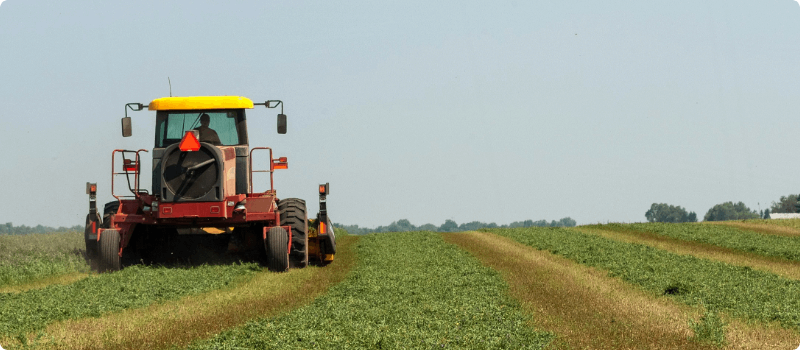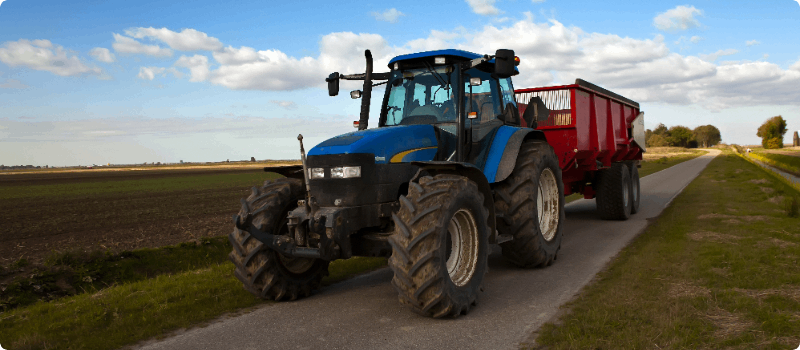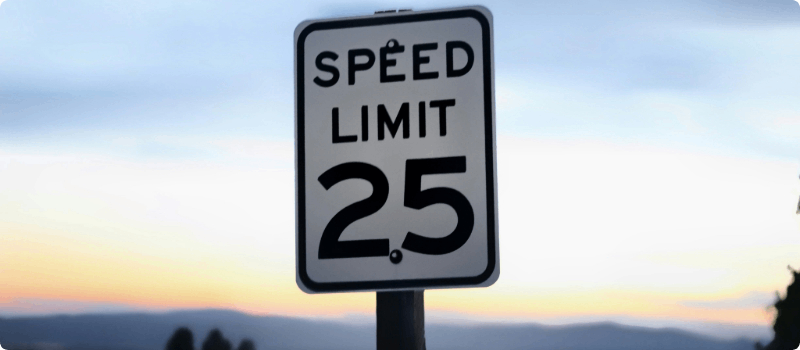How to Mount Your SMV Emblem
Updated May 21, 2024 . AmFam Team
Did you know the slow-moving vehicle (SMV) emblem is an important safety precaution? This reflective triangle lets other drivers on the road know that you’re not moving as fast as they are, so they have time to adjust their speed. It’s a safety measure designed to protect you and other drivers on the road.
The emblem is a cut triangle with a large orange uncut triangle in the center, surrounded by a reflective red border that has the corners nipped off. The colors and reflective nature make it easy to see in daylight and nighttime conditions.
It’s extremely important that you keep your SMV emblem in good condition without any part of it being blocked from sight. This means you need to make sure it’s not covered by other equipment, stickers, a tarp or even dirt and debris. If you see your emblem has faded and is not as bold and reflective as it once was, it’s time to replace it with a new one. Check with your local law enforcement experts on the reflective requirement in your state.

How to Mount Your SMV Emblem
So how do you mount an SMV emblem and where does it go? Here’s a checklist to make sure you’re mounting correctly.
Placement matters. The SMV emblem should be mounted with the triangle point up on the rear of the vehicle and it should be placed on or near the centerline. If it’s not possible to mount directly in the center because of the way your vehicle is constructed, that’s okay, just keep it close to center.
Right height. The base of the triangle needs to land somewhere between two and six feet above the ground. This gives you a generous range to work with, so you should be able to find a spot that will work.
Perpendicular to direction of travel. The emblem needs to be in a plane that is perpendicular to the direction of travel, plus or minus 10-degrees. That just means the emblem should be as straight up and down as possible and fully facing the traffic behind. The backs of farm vehicles and equipment can have odd shapes and contours, so it might be difficult to find a flat surface for mounting that’s straight up and down. But for the highest level of visibility, following this rule is important.

Use necessary lights. The emblem should never be considered a substitute for working lights and reflectors and should not block or obscure them. Lights shouldn’t be considered a substitute for a properly displayed SMV emblem either. Your SMV emblem is an added layer of protection on the road that works in conjunction with your vehicle’s lights and other safety features.
Moving objects only. One problem that’s cropping up in some rural areas is, SMV emblems are being mounted to stationary objects, like mailboxes. Don’t place these signs anywhere that isn’t mandated by law because it decreases the effectiveness of an SMV emblem as a safety measure. Imagine drivers becoming accustomed to seeing an SMV emblem on a mailbox on a rural road. After a while the sign loses its meaning, and the drivers keep their speed up when passing the mailbox. It’s not hard to imagine how that could cause a problem in the future.

Do I really need an SMV emblem?
Are you wondering if you need an SMV emblem? While farm equipment is typically where you see SMV emblems, some other vehicles may require one, too — and here are the guidelines.
The speed rule. The general guideline is that any vehicle that can’t keep up with 25 miles per hour consistently needs to have the SMV emblem mounted when it’s on a public roadway.

Driving on the road. The SMV emblem is designed to warn traffic when slow moving vehicles are on the road, so if it’s going on a public highway, an emblem is required.
If your vehicle would normally require the SMV emblem, but it’s being towed by a vehicle going significantly faster, then it doesn’t need its emblem while being towed — in fact, the emblem should be covered or removed in this situation.
Road equipment or machinery. While these vehicles are doing maintenance or construction and properly guarded by warning signs or flag attendants, they don’t need the SMV emblem. But if they’re traveling on the road and can’t maintain the speed rule, the warning emblem is necessary.

Animal-drawn vehicles. In some rural areas, it’s not uncommon to see a horse and buggy on the road. For safety, a properly displayed SMV emblem is required. But, if a horse-drawn vehicle is being driven by someone whose religion does not permit the use of signs, they are exempt. Instead, the carriage must be outlined in reflective tape. For others on the road, reflective tape is not a substitute for an SMV emblem. Although it’s not a bad idea to make your slow-moving vehicle more visible by using it in addition to the emblem.
In most situations, bikes, mopeds, mobility carts and other vehicles that aren’t expected to operate at speeds over 25 miles per hour are exempt from having an SMV emblem. But sometimes mopeds and all-terrain vehicles are used on the farm and operated under a special restricted operator’s license. If this is the case, your state may require an emblem. If you need further information, it’s best to contact your state Department of Motor Vehicles directly to see what the rules are for your area.

If your vehicle needs an SMV emblem, they can be purchased at many hardware, farm and implement, and construction stores and are relatively inexpensive. Mounting hardware and brackets can usually be purchased in the same location. Once your SMV emblem is installed correctly, you can rest easy knowing that you’re protecting yourself and others on the road. If you’d like to feel even more secure, connect with your American Family Insurance agent to review your farm and ranch insurance coverage.
This article is for informational purposes only and based on information that is widely available. We do not make any guarantees or promise any results based on this information.

